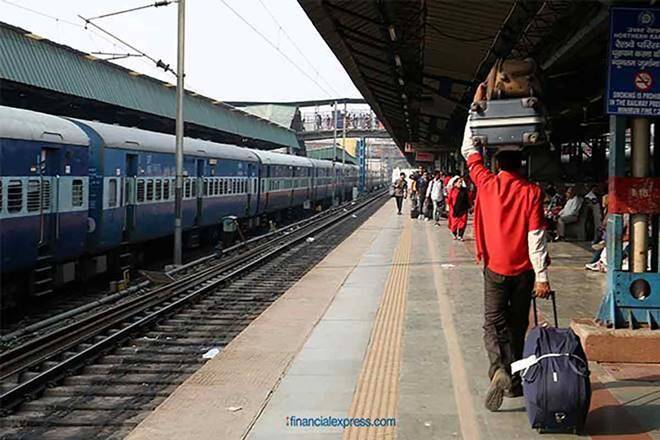New Delhi, Oct 14: In a complete revamp, Indian Railways is coming out with a new zero-based Time Table most likely on December 1, dropping about 600 passenger-carrying trains and eliminating 10,200 stations including 1600 night stoppages for efficient operational purposes.
Reeling under heavy loss in passenger business, the first of its kind exercise to prune trains and stations with less footfalls, is expected to boost railways’ earnings by about Rs 2000 cr a year.
Currently, the Railways has a total 4600 regular trains including Mail/Express, Premium, Superfast and local trains out of which 686 less patronised trains have been identified to be merged with other popular services.
While 363 local passenger trains are slated to become Mail/Express, the new zero-based Time Table envisages 120 Mail/Express to be upgraded as superfast service.
According to railways, a Mail/Express train is supposed to run at an average speed of 45 km per hour while superfast service is expected to run at an average speed of 55 KMPH.
Railways is also doing away with the old practice of link express train service in the new Time Table. Also known as slip coaches or sectional carriages, these are left behind after being detached from the rest of the train at a station prior to the final destination of the rest of the train.
These slip coaches are later re-attached to another train after being detached from the first one. Thus, the passengers in the coach do not have to change trains for their destination.
Now railways would run a separate train instead of link service to cater to the demand and improve the efficiency, said a senior railway official.
There will be significant reduction in the night halts in the rail network as the zero-based Time Table will have provision for train stoppages at major stations only while discarding the halts at other stations during the night time.
With less number of trains slated to run, there would be adequate time for maintaining the track, a crucial aspect of safety measures to prevent accidents.
Since earlier the path was always crowded with heavy traffic, railways were hard pressed for track maintenance.
Prepared by the IIT-Mumbai alongwith the Railways from the scratch, the massive exercise is expected to be completed by this month-end so that the steps are being taken to sync with the system from November.
CRIS, the Railways software arm, would be given the task to upgrade the ticketing system in sync with the new Time Table.
With the implementation of the new Time Table, according to railways, there will be enough paths to run more freight trains at higher speed.
During the pre-Covid days, freight trains were always kept in the loop lines to facilitate movement of passenger-carrying trains.
However, the new Time Table will have provision for freight train movement without any hindrance.
According to railways, the new Time Table aims efficient transportation with optimum use of the available resources and at the same time reducing travel time considerably to give passengers maximum comfort during the journey.


